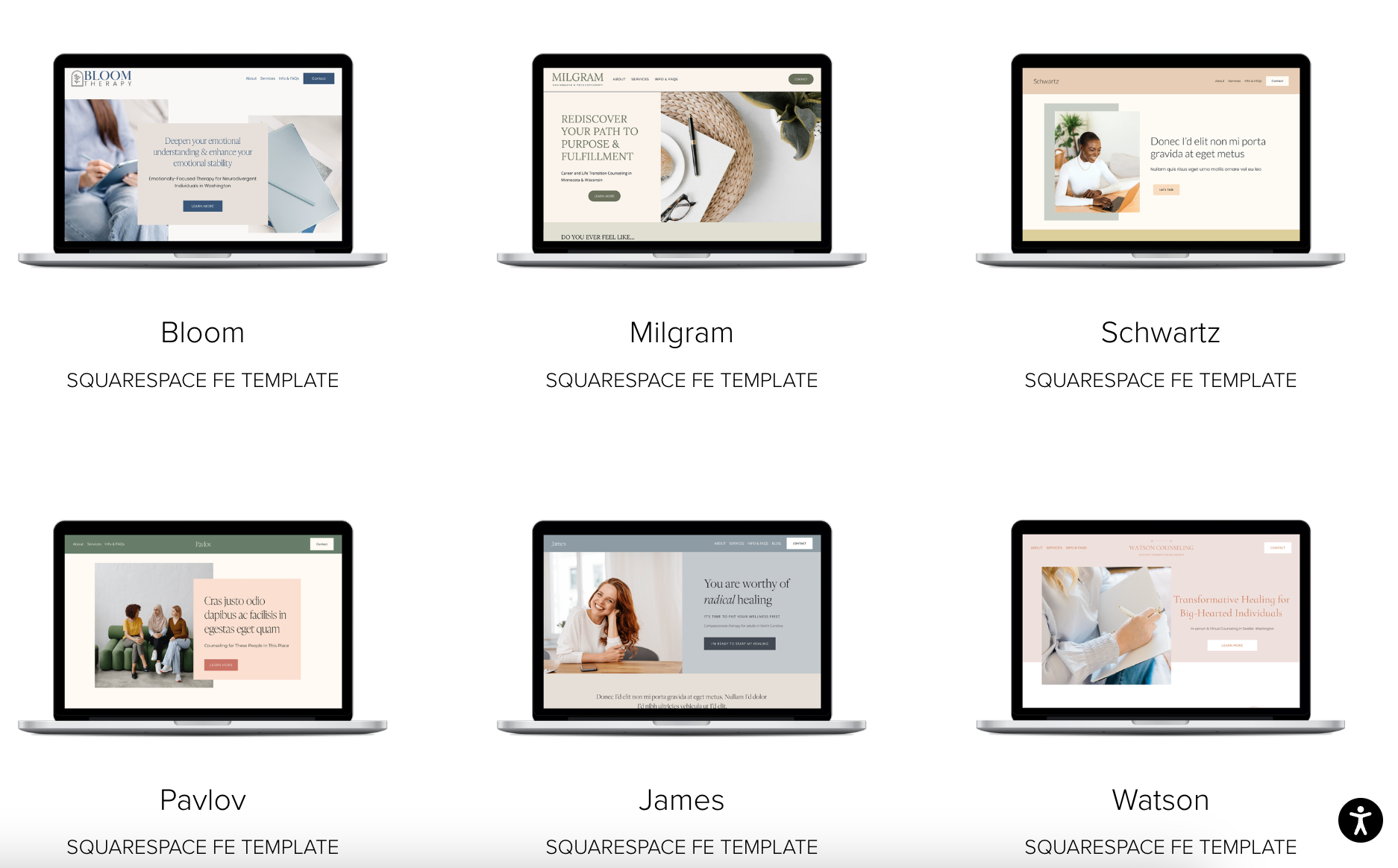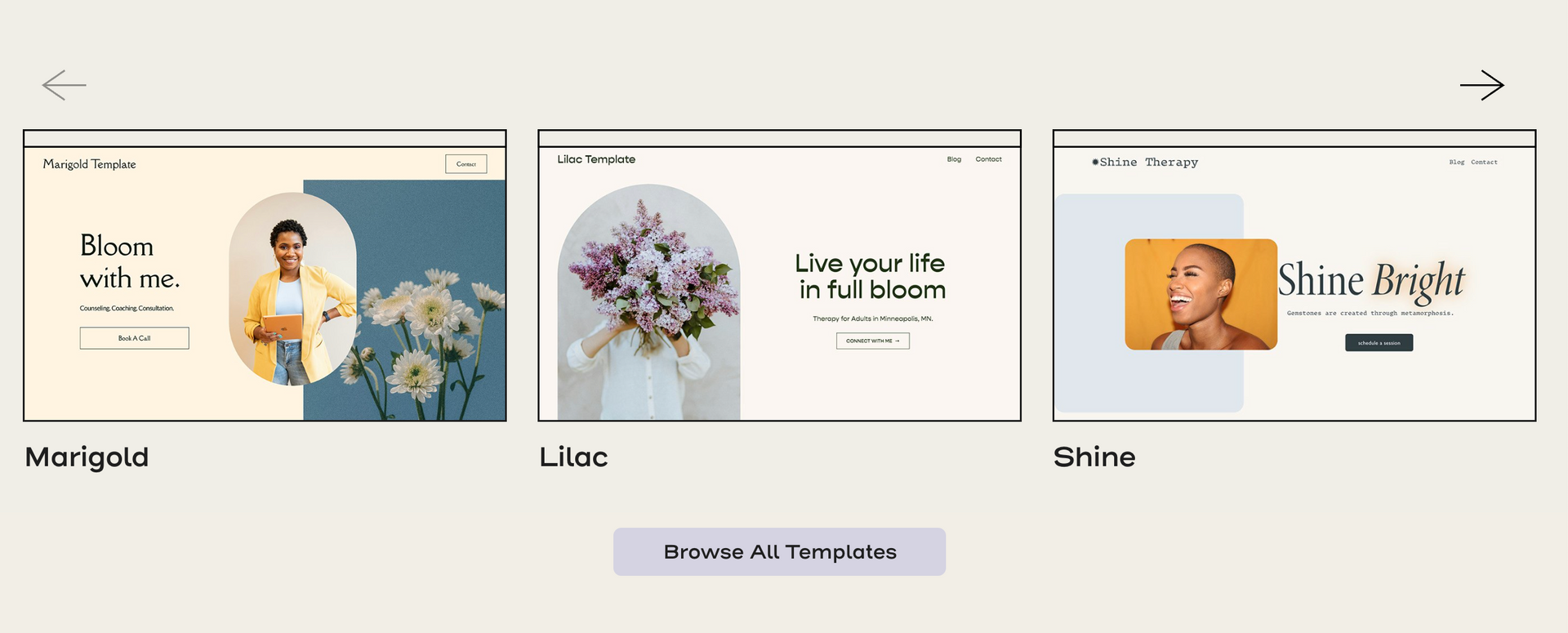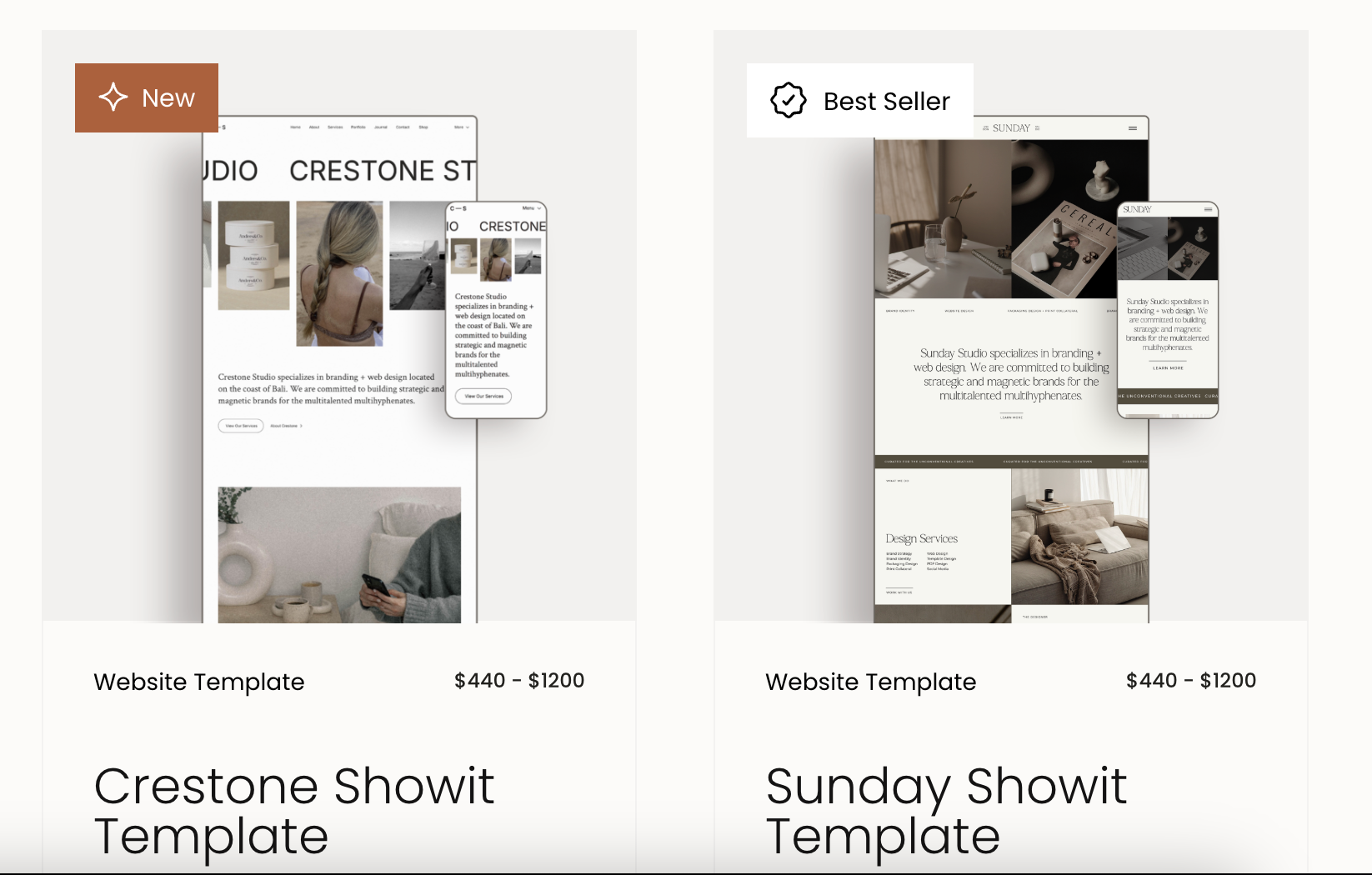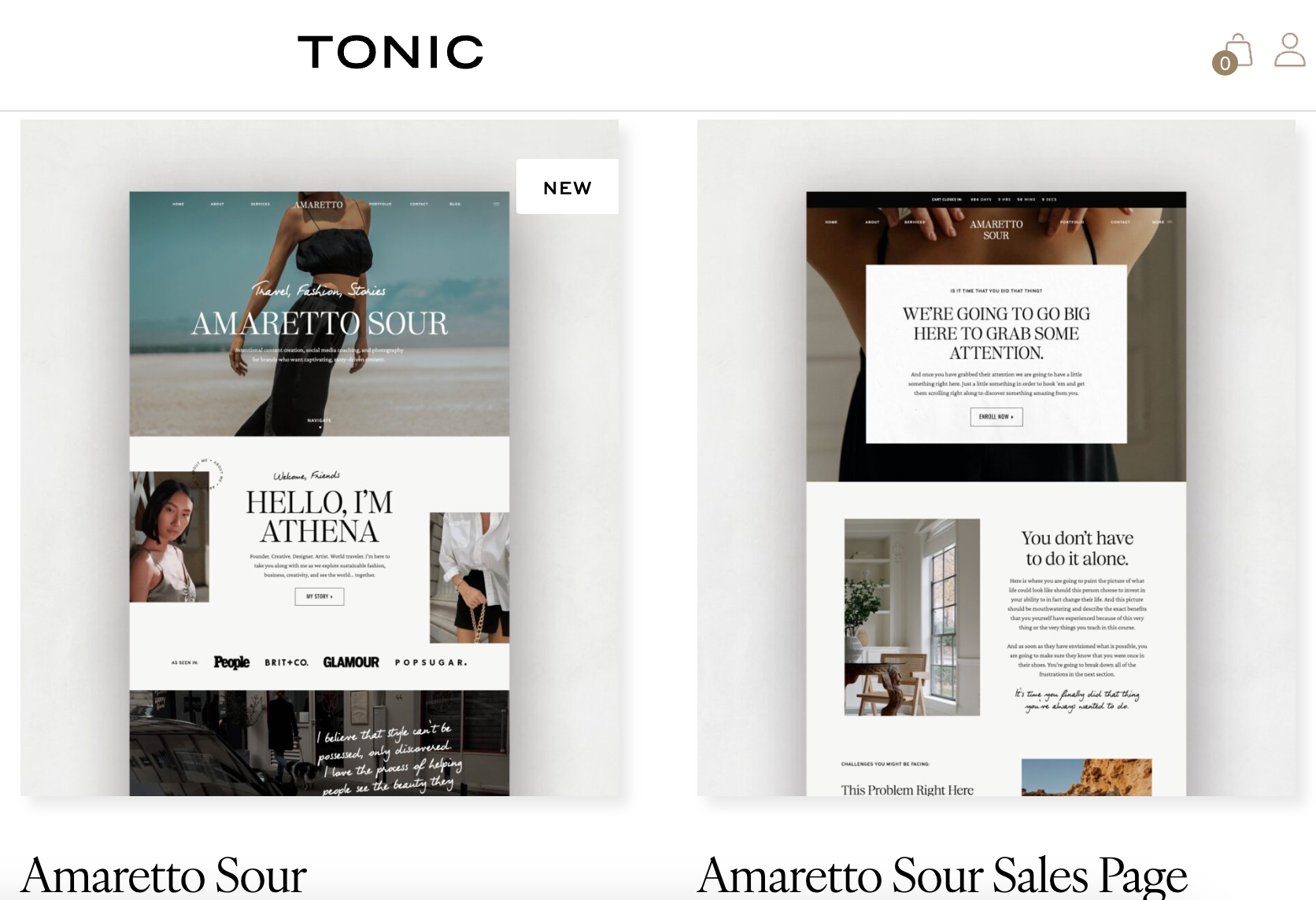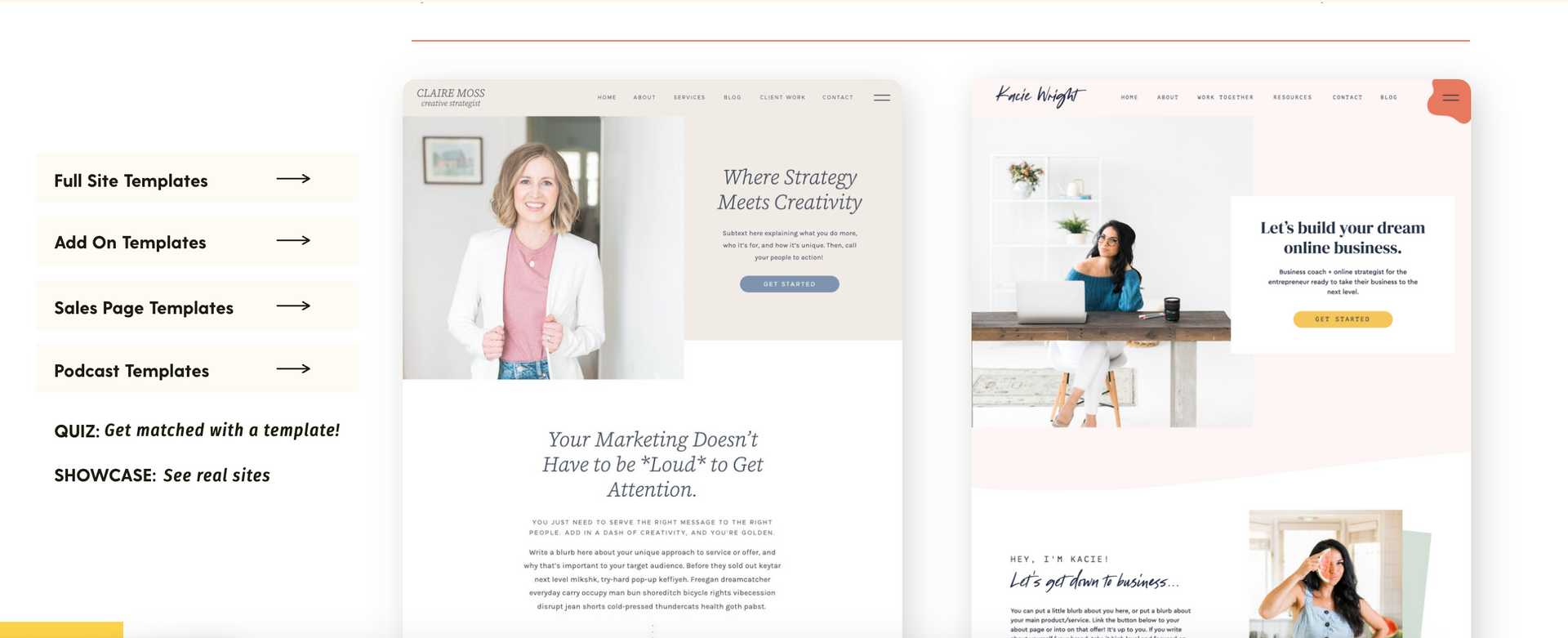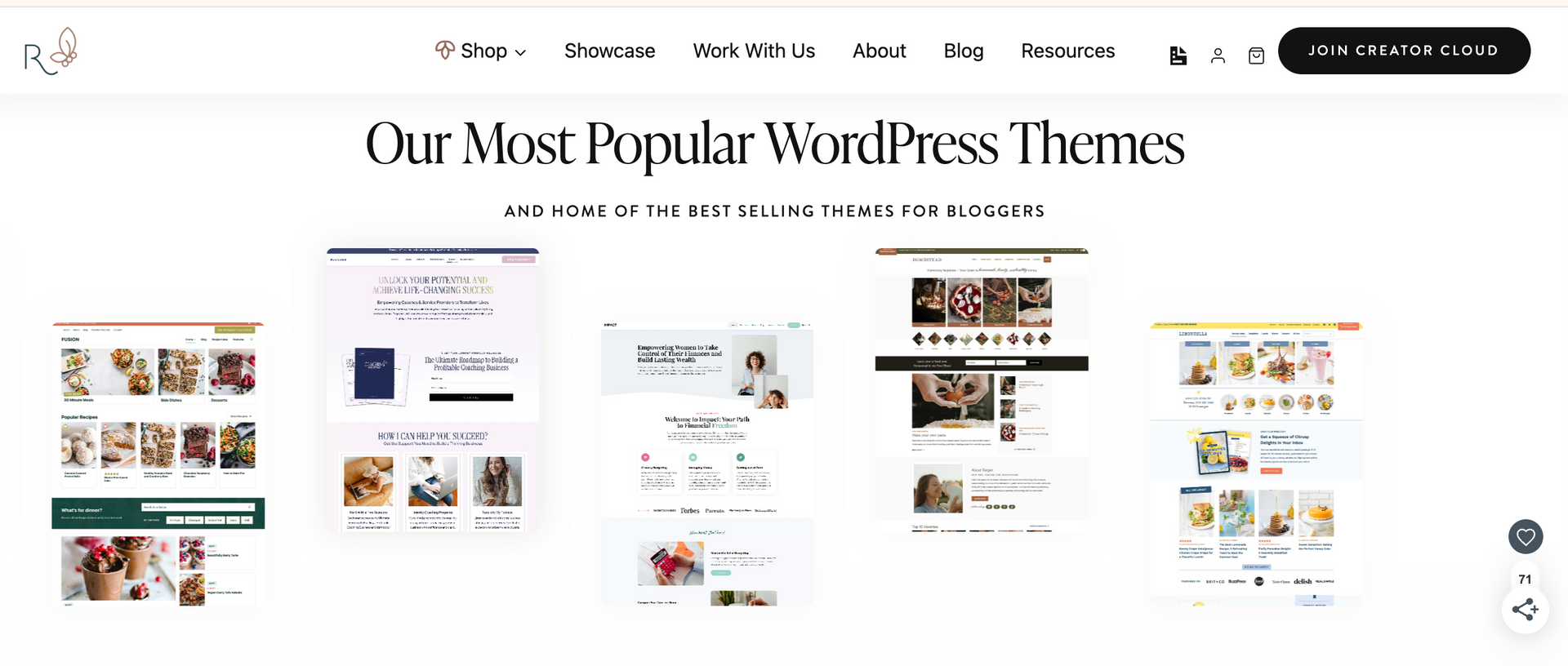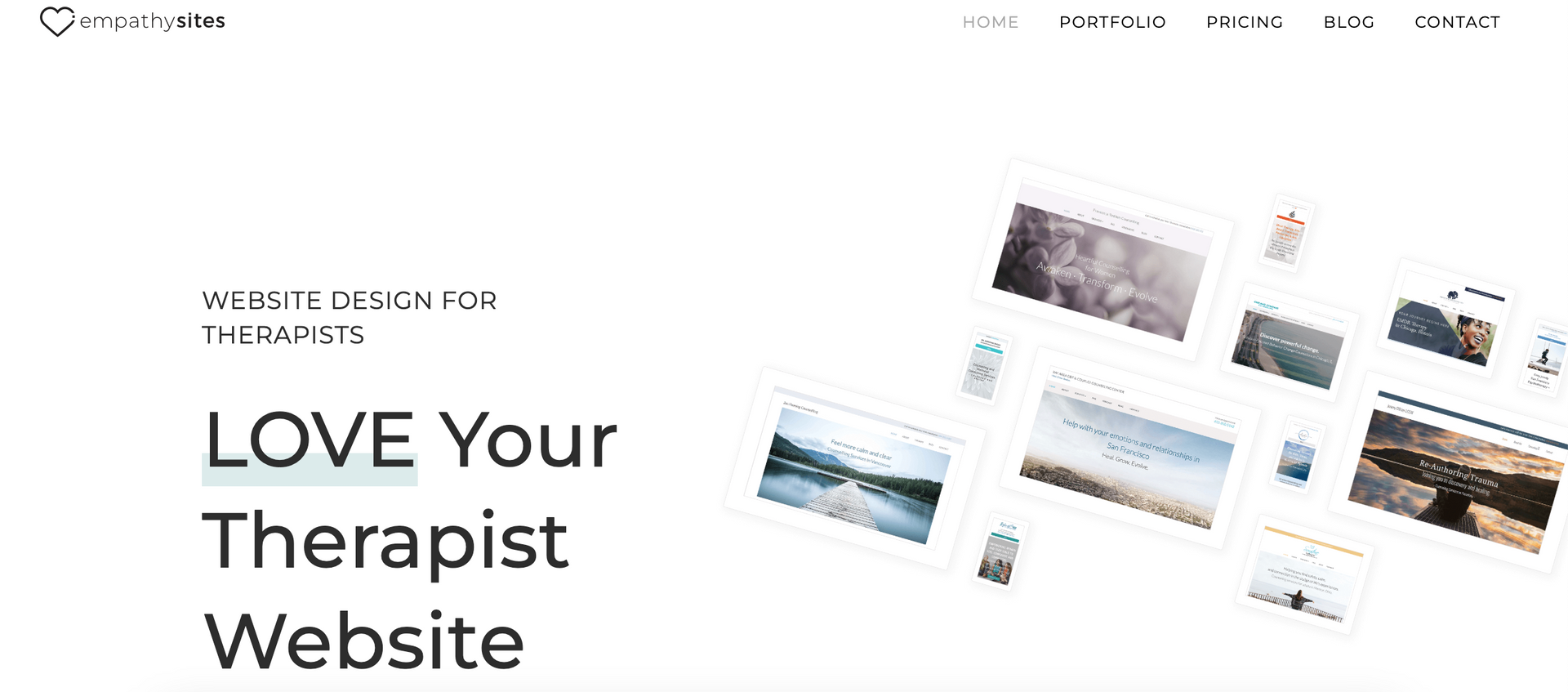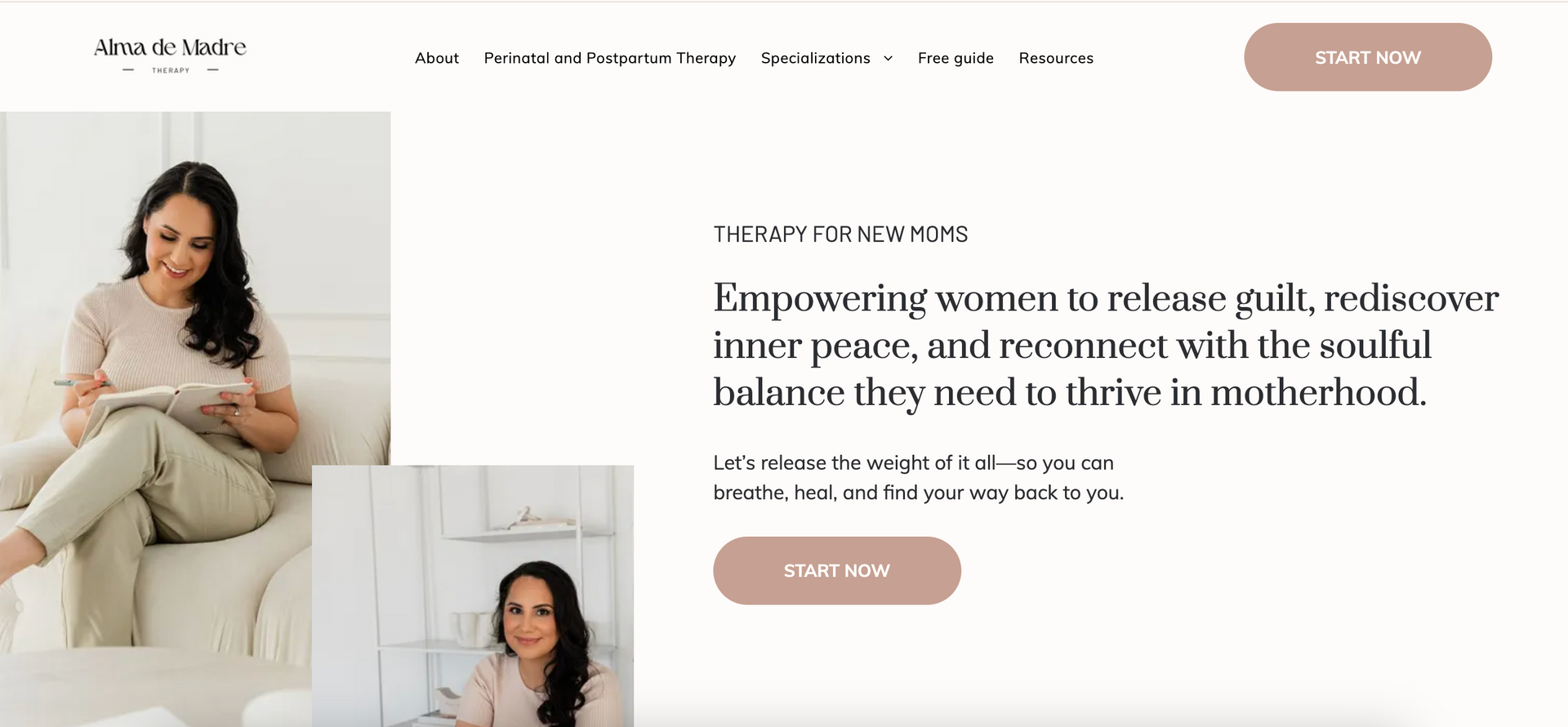Where to find the best therapist website templates
Late at night, after a full day of sessions, emails, and catching up on notes, you’re finally sitting down with a cup of tea. You know your website needs a refresh—or maybe you’ve been putting off launching one altogether. You type “therapist website templates” into Google, hoping for a shortcut to a site that finally feels like you. One that reflects your warmth, your approach, and the real work you do with clients.
Instead, you find dozens of options, all promising quick fixes. Some are beautiful, others feel generic. All of them leave you wondering: will this actually feel like me?
In case you’re new here, I’m Natalia, a website designer for therapists and practitioners, and I help private practice owners like you amplify their magic, gain visibility, and simplify their marketing efforts through strategic web design and SEO content. I’ve worked with dozens of therapists, from newly licensed professionals to long-standing practice owners, and I know that finding the right digital home matters—deeply.
This blog will help you explore the world of therapist website templates, where to find them, what to consider, and whether a custom website might actually save you more time, energy, and money than you think.
10 best therapist website templates and design
If you’re exploring template options, here are some of the most popular platforms offering beautiful designs for therapists. Each one has a slightly different style, tech stack, and level of effort involved—so the best choice depends on your needs, time, and how much DIY you’re up for.
1. Therapist Site Toolbox (Squarespace)
Therapist Site Toolbox offers a curated collection of Squarespace templates designed exclusively for mental health professionals. Each template is thoughtfully crafted to reflect the professionalism and empathy inherent in therapeutic practices, ensuring that your online presence resonates with potential clients.
Beyond just aesthetics, these templates come equipped with features tailored for therapists, including pre-designed pages for services, about, contact, and blogs. The designs incorporate calming color palettes and intuitive layouts, creating a welcoming environment from the first click.
2. Go Bloom Creative (Squarespace)
Go Bloom Creative (Affiliate link) offers Squarespace templates specifically built for therapists, counselors, and coaches. The tone is calm and nurturing—perfect for mental health professionals who want to create a sense of safety and ease from the first click.
Designed with therapists in mind, the templates feel soft, human, and intuitive. Squarespace is beginner-friendly, so once it’s set up, editing is easy.
3. Mission Twist - Squarespace templates with a sales funnel for service providers
Mission Twist (affiliate link) is a template shop that offers premium Squarespace templates with a sales funnel for service providers. I love that they have a minimalist, luxury, and sophisticated style. You also get set up support from Heather and a tutorial library to set up your site.
3. Northfolk & Co (Showit)
Northfolk is known for editorial-style designs that feel elevated and luxurious—great if your brand leans toward creative or boutique.
Visually stunning. Great use of white space and image-forward layouts that can make your practice look high-end and established.
4. Tonic Site Shop (Showit)
Tonic’s templates are bold, stylish, and personality-packed. Think: magazine-style layouts with punchy statements and rich color palettes.
The drag-and-drop editor makes customization accessible. The designs feel fresh, professional, and high-impact—great for therapists with a strong voice or niche.
5. Pix & Hue (WordPress)
Pix & Hue offers feminine WordPress themes that are elegant and calming—well-suited for solo practitioners and heart-centered therapists.
Beautiful fonts, soft tones, and layout flow that aligns with emotional safety. Great for therapists in fields like perinatal, grief, or somatic work.
6. Elizabeth McCravy Templates (Showit)
Elizabeth McCravy’s templates go beyond aesthetics. She’s a strategist, so the designs are made to convert—not just look pretty.
You’ll find structure baked in: CTAs, opt-ins, content layout tips. Ideal if you want both strategy and style.
7. Restored 316 (WordPress)
Restored 316 site offers minimal, feminine templates built for wellness practitioners. The feel is clean, inviting, and spacious—ideal for therapists who want a simple online presence without frills.
Lovely typography, soft aesthetics, and flexible layout options. Great for long-form blog content.
8. Empathy Sites (Custom platform + templates)
Empathy Sites is a company that builds templates exclusively for therapists and group practices. They understand the clinical space and client expectations.
The structure is tailored to the therapy world—HIPAA-friendly language, welcome space for bios, and insurance info.
What therapists really want from their websites (and what templates often miss)
You want your site to reflect who you are—not just what you offer. When a potential client lands on your website, they’re asking themselves one quiet but powerful question: “Do I feel safe here?” That question isn’t answered by trendy fonts or a minimal layout—it’s answered by warmth, clarity, and the deep sense that someone understands what they’re going through.
A strong website for a therapy practice should:
- Build trust immediately – You have seconds to make a first impression. Clients want to know that they’re not alone in what they’re feeling and that you’ve helped people like them before.
- Speak to your ideal client’s emotional needs – Whether it’s anxiety, trauma, burnout, or grief, your website should show potential clients that you understand how those experiences feel.
- Be easy to navigate and calming to interact with – The layout, colors, and language should make someone feel more grounded—not overwhelmed.
Templates can be a helpful tool, but many miss this mark. They focus on design over connection. And that’s where therapists often get stuck—not because they don’t care, but because the template didn’t come with a strategy for human connection.
Therapy website template: what to look for
Start with your goals
Before you browse another template gallery, pause and ask: what do I want my website to do for me? This might sound simple, but many therapists skip this step. Your site might need to:
- Convert visitors into consultation calls
- Build your email list through a lead magnet
- Act as a resource hub for your blog or podcast
When you know your goals, you can better assess if a template will support them—or if you’ll need to stretch the design just to make it fit.
Consider the emotional experience
Therapists don’t sell products. They create safe, transformative spaces for healing. Your website should feel like an extension of that.
Many templates weren’t designed with this emotional nuance in mind. Cold typography, harsh colors, or pushy calls-to-action can create subtle dissonance with what your work actually feels like.
Look for templates (or better yet, work with someone who understands this) that invite your ideal client in gently—creating a virtual doorway that feels aligned with the in-person experience of working with you.
Examples from real therapist websites I’ve designed
It’s one thing to talk about what makes a website “work,” and another to see it in action. Here are a few real-life examples of therapy websites I’ve designed for private practice owners who needed more than a beautiful layout—they needed a digital home that felt like them.
Healing Harmony: For a coach and therapist blending energy and evidence-based healing
When this client came to me, their biggest struggle wasn’t their expertise—it was expressing it online in a way that didn’t feel generic.They are a life coach and therapist who integrates holistic healing with clinical training. We created a design that felt as grounded and expansive as their practice: muted tones, soft movement, and copy that invited introspection. Now, clients land on the site and instantly feel the blend of soul and science that sets them apart.
Happy Autumn Counseling: A therapy space rooted in warmth, clarity, and gentle courage
View site →
The founder wanted something deeply welcoming for people experiencing anxiety, trauma, and social disconnection.
Together, we built the site with storytelling at its core. We designed sections that mirror the therapy process—gently guiding the reader from fear to trust, from hesitation to hope. The result is a website that feels like a soft exhale. It has increased inquiries, time-on-page, and—most importantly—client connection.
Alma de Madre: A safe, no-fluff space for new moms navigating the postpartum depression
View site →
This project was close to my heart. Alma de Madre isn’t just a therapy space—it’s a movement for maternal mental health that says, “you don’t have to be perfect to be worthy of care.” The founder, Karla, needed a site that broke away from the sugar-coated narratives of motherhood.
We created a bold-yet-soft design that speaks honestly to guilt, overwhelm, identity loss, and the sacred transformation of becoming a mother. The result is a site that validates, empowers, and invites. New moms now reach out saying they “felt seen” before they even booked a session.
Are templates really saving you time—or just delaying your launch?
When you’re launching (or refreshing) your private practice website, templates can feel like a gift. They’re affordable, look polished, and promise a fast track to getting online. And for some therapists, they do offer a decent starting point. But the real question is—are they moving you forward or keeping you stuck in endless edits and second-guessing?
Here’s what most people don’t tell you about website templates: while they lower the cost upfront, they often raise the cost in time, energy, and confidence.
The DIY trap: when “plug and play” becomes “hours and hours of tinkering”
You buy the template. You’re excited. You open the editor... and immediately feel stuck. You’re not sure what sections to keep or delete. You rewrite your homepage headline 18 times. You wonder if “Book a free call” sounds too pushy—or not clear enough.
And suddenly, your dream of launching in a weekend turns into a project that’s been sitting in your browser tabs for three months.
Missing the emotional layer your clients are craving
Therapists aren’t selling shoes. You’re not offering a product; you’re offering safety, trust, and emotional relief. Most templates were built to “look good”—but not to
feel good.
When your business grows, most templates don’t grow with you
Maybe you want to add a new niche next year. Or hire an associate. Or start offering groups or retreats. Templates often box you in with a layout that only fits your practice
right now, not the vision you’re stepping into.
That means more rebuilding later, more time lost, and sometimes even more money spent hiring someone to “fix” what was never designed for your future in the first place.
If you want to skip the template: launch your custom website with me
You’ve already done the hard part—building a practice rooted in compassion, ethics, and deep transformation. The last thing you need is to spend hours dragging blocks around a website builder, wondering why nothing quite feels like you.
Maybe you’ve already tried the template route. Maybe you’ve bought one, stared at the blinking cursor, and asked yourself:
“How do I explain what I do in a way that actually connects?”
Or maybe you’ve been putting off your website for months, not because you don’t care, but because you’re overwhelmed and have no idea where to start.
This is where I come in.
I designed my Website in a Week package specifically for therapists, coaches, and practitioners who want a site that feels aligned, looks beautiful, and is ready to actually bring in clients. Without the tech drama. Without the copy spiral. And without spending weeks DIY-ing something that never quite lands.
Here’s what your custom website experience includes:
- A five-page website designed with your dream clients in mind
Each section is crafted for connection and conversion, guiding visitors to feel safe, seen, and ready to take the next step. - Lead magnet funnels, contact forms, and scheduler integrations
We make sure everything works. From your intake form to your Calendly link to your email list—you’ll be set up to receive inquiries with ease. - Website branding (yes, even without a logo)
No need to hire a branding team. We’ll elevate your name with intentional typography and color that reflects your style and the energy of your practice. - SEO-optimized blog posts (2 per month)
Your website should grow with you—and bring in traffic. We include content that positions you as a trusted expert in your niche, and keeps your site ranking on Google. - One VIP copywriting review day
This is where the magic happens. I’ll help you refine your voice, clarify your message, and ensure your copy speaks directly to your ideal client’s heart (and search terms). - Ongoing support and hosting for $197/month
You’ll have everything managed for you, from tech troubleshooting to SEO updates—so you can stay focused on what matters most: your clients.
Whether you choose to start with a beautiful, therapist-friendly template or invest in a custom design that brings your unique vision to life, both paths are valid.
What matters most is that your website feels like you—not like everyone else.
You deserve a space that’s 100% yours—crafted around your voice, your energy, and the goals you have for your practice.
If you’re ready for a site that truly reflects the depth of your work and helps more of the right people find you, I’d love to build it with you.
➡ Book your Website in a Week project now and launch with clarity and confidence
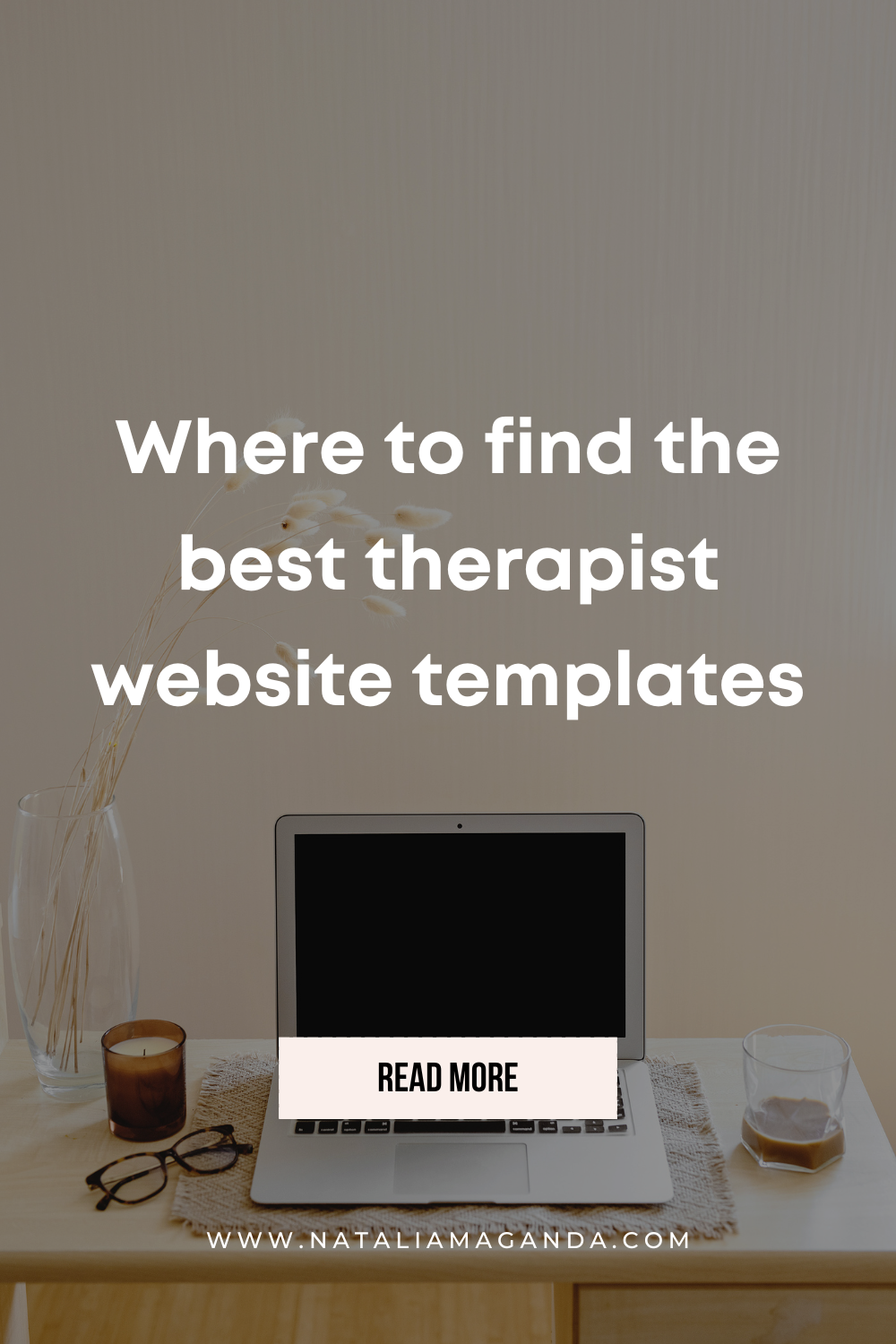
* AI Disclosure: This content may contain sections generated with AI with the purpose of providing you with condensed helpful and relevant content, however all personal opinions are 100% human made as well as the blog post structure, outline and key takeaways.
* Affiliate Disclosure: Some of the links on www.nataliamaganda.com may contain affiliate links meaning that I will get a commission for recommending products at no extra cost to you.

hello! i'm natalia
Latina, web design expert for mental health professionals.
I help ambitious life coaches, therapists and holistic leaders amplify their magic, gain visibility, and simplify their marketing efforts through strategic web design and content.





